The iPad Pro and the MacBook Air are powerful and reasonably-priced ways to work. Here's what to consider when trying to choose one over the other.
The MacBook Air, equipped with M2 and overhauled in many different ways, is a great entryway into Mac ownership. With its compact size and lightweight, as well as high performance, it's an excellent choice for a notebook to get everyday tasks done or for school.
However, Apple has spent years framing the iPad Pro as a potential alternative to a MacBook. With a touchscreen display and seemingly equal capabilities and performance, the 12.9-inch iPad Pro is a compelling option for those in the market for a new computing device.
A tablet with appropriate accessories can handle everyday workloads like a notebook. The thing to work out, though, is if it's the better option for most people.
M2 MacBook Air vs M1 12.9-inch iPad Pro - Specifications
| Specifications | MacBook Air (2022, M2) | 12.9-inch iPad Pro (2021, M1) |
|---|---|---|
| Starting Price | $1,199 Best M2 MacBook Air prices | $1,099 Best 12.9-inch iPad Pro prices |
| Dimensions (inches) | 11.97 x 8.46 x 0.44 | 11.04 x 8.46 x 0.25 |
| Weight (pounds) | 2.7 | 1.5 |
| Display | 13.6-inch Liquid Retina, Wide Color (P3), True Tone | 12.9-inch Liquid Retina XDR, Mini-LED backlighting, ProMotion, Wide Color (P3), True Tone, Multi-touch |
| Resolution | 2,560 x 1,664 | 2,732 x 2,048 |
| Brightness | 500 nits | 600 nits SDR, 1,600 nits peak (HDR) |
| Processor | Apple M2 | Apple M1 |
| Graphics | 8-core GPU, 10-core GPU | 8-core GPU |
| Memory | 8GB, 16GB, 24GB | |
| Storage | 256GB, 512GB, 1TB, 2TB | 128GB, 256GB, 512GB, 1TB, 2TB |
| Battery | 52.6Wh lithium-polymer, Up to 15 hours web, 18 hours video | 40.88Wh lithium-polymer, Up to 10 hours web or watching video |
| Networking | 802.11ax Wi-Fi 6 Bluetooth 5.0 | 802.11ax Wi-Fi 6, Bluetooth 5.0, Optional 5G |
| Biometrics | Touch ID | Face ID |
| Cameras | 1080p FaceTime HD | Rear 12MP Wide and Ultra Wide cameras, Front 12MP Ultra Wide TrueDepth Camera |
| Interfaces | Backlit Magic Keyboard, Force Touch trackpad | Multi-touch display, Apple Pencil 2 |
| Audio | Four-speaker sound system, Three-mic array with directional beamforming, Headphone jack with high-impedance headphone support, Dolby Atmos support with Spatial Audio | Four-speaker audio, Five studio-quality microphones Dolby Atmos support with Spatial Audio |
| Ports | Two Thunderbolt/USB 4, 3.5mm headphone, MagSafe 3 | One Thunderbolt/USB 4, Smart Connector |
M2 MacBook Air vs M1 12.9-inch iPad Pro - Physical Features
A significant change to the design of the MacBook Air is that it is no longer wedge-shaped. Instead of the tilted notebook design that is thin at one edge and wider at the other, it's now uniformly flat.
This change results in a footprint of 11.97 inches by 846 inches and a thickness of 0.44 inches for the MacBook Air.
The already-flat 12.9-inch iPad Pro has a slightly smaller footprint at 11.04 inches by 8.46 inches but is ultimately much thinner at 0.25 inches.
There's also a weight difference, with the iPad Pro at 1.5 pounds to 2.7 pounds for the MacBook Air.
A lot of the thickness difference is simply because the MacBook Air is a notebook of two sections containing a screen and a keyboard. The iPad Pro is a screen in an enclosure, with no second element when used on its own.
There is the iPad Pro's Magic Keyboard to consider, but we will discuss that later.
In terms of design aesthetics, there is a lot shared between the two models. Both employ Apple's signature use of aluminum for the enclosure, with rounded corners and a general feeling they are impossibly thin for what they offer.
They also have gorgeous large screens with reasonably small bezels, albeit slightly more thick on the iPad Pro's version, so you can more easily grip without triggering the screen.
M2 MacBook Air vs M1 12.9-inch iPad Pro - Display
The two screens are roughly in the same ballpark in size, but there is a lot of difference in what is on offer here.
The MacBook Air's updated screen consists of a 13.6-inch LED-backlit Liquid Retina IPS display, with a resolution of 2,560 by 1,664. You get the standard support for Wide Color (P3), 1 billion colors, and True Tone.
The new display also has a notch cut out to allow the webcam to exist without being moved. This does eat into the display a bit, but given that it occupies the main menu space and is hidden when apps are fullscreen with strategic black elements, it's not a massive intrusion.
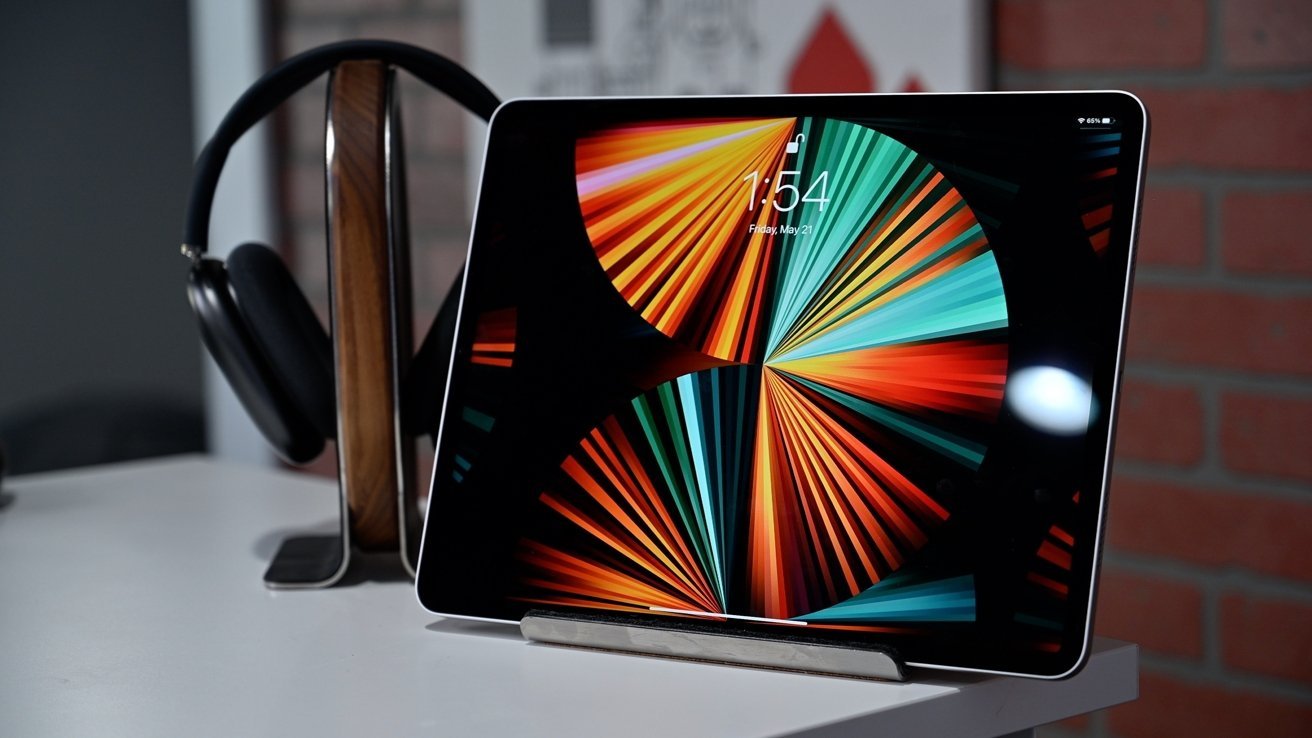 The Liquid Retina XDR display on the 12.9-inch iPad Pro is brighter and better than the MacBook Air's.
The Liquid Retina XDR display on the 12.9-inch iPad Pro is brighter and better than the MacBook Air's. The 12.9-inch iPad Pro has a smaller screen, as the name suggests. However, as a Liquid Retina XDR display, it is a mini-LED backlit screen with 2,596 full-array local dimming zones, enabling a more vibrant image and a sky-high 1,000,000:1 contrast ratio.
That is something the LED backlighting of the MacBook Air cannot match.
At 2,732 by 2,048, the resolution is higher despite the smaller screen size, giving the iPad Pro a pixel density of 264ppi to the MacBook Air's 224ppi.
The better display technology also adds in a higher brightness of 600 nits for SDR content against 500 nits for the MacBook Air. The iPad Pro can also go to 1,000 nits of "XDR brightness" and even 1,600 nits at peak for HDR content.
That's before you get to things like ProMotion support in the iPad Pro and the ability to use the Apple Pencil, which the Air lacks entirely. And obviously, there's multi-touch support for the display of the iPad Pro.
M2 MacBook Air vs M1 12.9-inch iPad Pro - Processing and Performance
The iPad Pro uses the M1 chip, a desktop-class addition with an 8-core CPUT, using four performance cores and four efficiency cores. It's joined by an 8-core GPU and a 16-core Neural Engine.
Memory in the iPad Pro rests at 8GB for the 128GB, 256GB, and 512GB models, while the 1TB and 2TB versions have 16GB. You cannot pay to upgrade the memory of the iPad Pro, at least without adding storage capacity.
The M2 in the MacBook Air is similar to the M1, in that it has an eight-core CPU with the same performance-efficiency split, an 8-core GPU, and a 16-core Neural Engine.
However, the newer-generation model runs at a higher clock speed for the CPU, the M2 also has a 10-core GPU option, and the 16-core Neural Engine is also improved to be faster.
Then there's the inclusion of the Media Engine, elements that the M1 Pro and M1 Max introduced, but the M1 lacks. The Media Engine included dedicated hardware encoding and decoding elements for video, making it extremely handy for those working in videography or video editing.
In terms of performance, the difference is pretty noticeable. Geekbench benchmarks put the M2 MacBook Air at 1,879 for single-core performance and 8,668 for multi-core.
The 12.9-inch iPad Pro manages 1,705 for single-core and 7,209 for multi-core.
The iPad Pro was destined to be less powerful due to the older chip and the fact that it's a tablet.
While neither the MacBook Air nor the iPad Pro have active cooling systems, the iPad Pro has to be more proactive about thermals. Since it's potentially being carried around in active use, it has to run without generating too much heat, which can impact performance versus a more thermally-managed Mac.
M2 MacBook Air vs M1 12.9-inch iPad Pro - Cameras
A significant difference in the two is the selection of cameras available at the user's disposal.
The MacBook Air has one, the FaceTime HD camera. A 1080p imaging sensor hidden in the display notch, it's the only camera included in the MacBook Air.
It is an upgrade from the 720p of the previous incarnation, and the M2's image signal processing easily assists it, but it's a very minimal option.
The iPad Pro, by nature of being a tablet and not a notebook, naturally offers more cameras. The front-facing one is a 12-megapixel TrueDepth camera, which provides depth-sensing capabilities and is used to power Face ID.
Then, around the back, the iPad Pro has a pair of 12-megapixel cameras covering Wide and Ultra Wide angles, complete with a 5x digital zoom in, 2x digital zoom out, a TrueTone flash, and 4K video capabilities.
The bells and whistles of the iPad Pro camera system continue with its various Portrait Mode shots, autofocus with focus pixels, Animoji and Memoji support, and practically all of the shooting features you could use expect from an Apple tablet.
Then there's the LiDAR sensor, which helps with 3D depth tracking on the back of the iPad Pro, along with other photography-related applications, such as low-light autofocus assistance.
You're not going to get any of that on the MacBook Air's single sensor, but there may be some reprieve in the future. As part of macOS Ventura, users will be able to use an updated Continuity Camera, enabling the rear camera of an iPhone to be used as a webcam, complete with Portrait and Stage Light modes and the headline Desk View.
It may not be something to enable iPad-style photography on a MacBook Air, but it's a start.
M2 MacBook Air vs M1 12.9-inch iPad Pro - Connectivity
The MacBook Air has four ports, consisting of two Thunderbolt/USB 4 ports, a 3.5mm headphone jack, and a MagSafe 3 connection. The last one is a fresh addition, enabling recharging without occupying one of the scarce physical data connections of the notebook.
The 12.9-inch iPad Pro has a single Thunderbolt/USB 4 port, but it also has a Smart Connector, which can be used with accessories without using the only available port.
 You can connect a surprising amount to the iPad Pro's Thunderbolt port, but the MacBook Air offers more.
You can connect a surprising amount to the iPad Pro's Thunderbolt port, but the MacBook Air offers more. While earlier iPad Pro models offered headphone jacks, the latest no longer provides the port. That leaves users to either use an adapter or use Bluetooth earphones instead.
The two devices are fairly even on the wireless side, with Wi-Fi 6 support and Bluetooth 5.0. However, the iPad Pro can be set up with a 5G-enabled cellular connection, which is simply unavailable on the MacBook Air.
M2 MacBook Air vs M1 12.9-inch iPad Pro - Battery
Of the two, the MacBook Air has the larger-capacity battery, using a 52.6Wh lithium-polymer version versus the iPad Pro's 40.22Wh component.
Regarding how long you can use each, Apple says the MacBook Air can last up to 15 hours for web access and up to 18 hours of video playback.
The iPad can go to 10 hours of web access or video playback. This makes sense, considering it has a physically smaller battery.
Despite the difference in capacity, the two can easily survive a working day on a single charge. That does depend on what tasks each have to perform throughout the day, and more demanding workloads will reduce battery quicker.
M2 MacBook Air vs M1 12.9-inch iPad Pro - Audio
The MacBook Air has graduated to a four-speaker sound system in the latest iteration, which aligns with the iPad's quad-speaker arrangement. There's also parity with Dolby Atmos support for both, complete with Spatial Audio.
On using headphones, the MacBook Air's headphone jack offers support for high-impedance headphones. There's no built-in headphone jack on the iPad Pro, so you must acquire an adapter or switch to Bluetooth for that device.
The iPad Pro offers five "studio quality" microphones for receiving audio, while the MacBook Air has a three-mic array with directional beamforming.
M2 MacBook Air vs M1 12.9-inch iPad Pro - Storage
There's a fair amount of similarity between the MacBook Air and the iPad Pro when it comes to storage, as they have almost identical capacity options.
The MacBook Air offers 256GB, 512GB, 1TB, and 2TB capacity options. The iPad Pro does the same and has a 128GB variant on the value end.
The cost of increasing the storage capacity is identical, at least for the comparative capacities. Going from 256GB to 512GB costs an extra $200 on both devices, with the 512GB to 1TB jump an extra $400, and $400 again from 1TB to 2TB.
Going from 128GB to 256GB on the iPad Pro is $100.
M2 MacBook Air vs M1 12.9-inch iPad Pro - Other Features
Both devices offer biometric security, but in different ways. The MacBook Air has a Touch ID sensor on the keyboard, while the iPad Pro provides Face ID using its True Depth camera array.
Then there's the existence of a keyboard on the MacBook Air, which is preferable for typing over the screen-based software keyboard that doesn't actuate on the iPad Pro.
The iPad Pro benefits from having a touchscreen, an element that simply isn't available for the MacBook Air. Instead, there's a trackpad for notebook users to control the cursor.
Lastly, there's the Apple Pencil, with the iPad Pro compatible with the second-generation version of the pressure-sensitive stylus.
M2 MacBook Air vs M1 12.9-inch iPad Pro - But what about the Magic Keyboard?
It's hard not to point out that massive differences in form factor and ecosystem are at play here. The MacBook Air is a notebook, while the iPad Pro is a tablet that can be held and used completely differently.
But, as hinted not long ago, not everyone is keen to type for long periods by tapping their fingers into an unresponsive glass display. Some sort of keyboard is needed if the iPad Pro is to be considered a valid alternative to a notebook.
The best example of its kind for this is the Magic Keyboard, Apple's signature accessory that uses a hinged mechanism to float the iPad Pro above a physical keyboard.
The cost for the privilege of using the accessory is steep, but not just its $349 cost. You could opt for the cheaper Smart Keyboard Folio for $199 to save a bit of money.
As an accessory that acts as a cover for the iPad Pro, the Magic Keyboard is helpful, but it adds weight and thickness. It practically doubles the thickness of the standalone iPad Pro, while at 3.1 pounds, it's a little heavier than the MacBook Air.
Of course, you can still remove the iPad Pro from the Magic Keyboard when you don't need it and would rather carry around a digital clipboard. That's something the MacBook Air cannot offer.
M2 MacBook Air vs M1 12.9-inch iPad Pro - Pricing
The M2 MacBook Air starts at $1,199, which gets you the M2 with the 8-core GPU, 8GB of Unified Memory, and 256GB of storage. Going to the M2 with a 10-core GPU adds $100 to the cost.
Increasing the memory from 8GB to 16GB is $200 more, and another $200 to get to 24GB.
As mentioned earlier, storage upgrades cost $200 from 256GB to 512GB, $400 from 512GB to 1TB, and $400 from 1TB to 2TB.
The 12.9-inch iPad Pro starts at $1,099 (check sale prices) with 128GB of storage. It costs $100 to get to 256GB, then the storage upgrades are the same as the MacBook Air. Cellular is an additional $200, regardless of capacity.
At the top end, the MacBook Air's 10-core GPU, 24GB of memory, and 2TB of storage brings the total cost to $2,499. A maxed-out iPad Air is $2,399 (currently on sale), with 2TB of storage and cellular.
Then there's $349 for the Magic Keyboard for the iPad Pro or $199 for the Smart Keyboard Folio. If you want the second-generation Apple Pencil, that's another $129.
Adding the Magic Keyboard and the Apple Pencil increases the iPad Pro's cost by $478, turning the cheapest model $1,577 and the most expensive $2,877.
A replacement, but with different priorities
As an alternative to a notebook, the iPad Pro continues to show it has promise. With the right accessories, it can bridge the gap by offering all of the benefits of a tablet that can also function like a notebook.
However, doing so has one other element you must consider alongside the additional costs of going down that route. You need to think about the tasks it will handle.
For everyday tasks, such as writing long texts, drawing, photo editing, and gaming, the iPad Pro will handle them very well. There is a massive collection of apps for iPadOS that will let you do practically anything.
The problem is mainly about outlier tasks. If you need to use specialist equipment, it may not necessarily connect up to an iPad Pro properly, making it more suitable for a Mac.
Then there are the numerous "pro" apps in macOS that haven't gone over to iPadOS. Yes, you can use iMovie and GarageBand on iPadOS, but Final Cut Pro and Logic are still Mac-centric software.
If you're video editing, you'll lean towards the M2's Media Engine over the iPad Pro's extra utility.
Recommending one over the other is highly dependent on your aims and what you want to do with the computing setup.
The MacBook Air will be the better and cheaper option if you need a workhorse for heavy text entry. If it's less text-heavy existence and more consumption of photos, video, and web surfing, the iPad Pro could be better.
For people who want to get the best of both worlds and could feasibly afford a cheap MacBook Air and an iPad Pro, it wouldn't be a bad idea to spend heavier on a better iPad Pro setup with all the accessories.
Just so long as it can do what you need it to do.
Where to buy
You can pick up Apple's 2022 M2 MacBook Air at the following retailers:
Apple's 12.9-inch, meanwhile, is on sale for up to $300 off at Amazon and at B&H Photo.
 Malcolm Owen
Malcolm Owen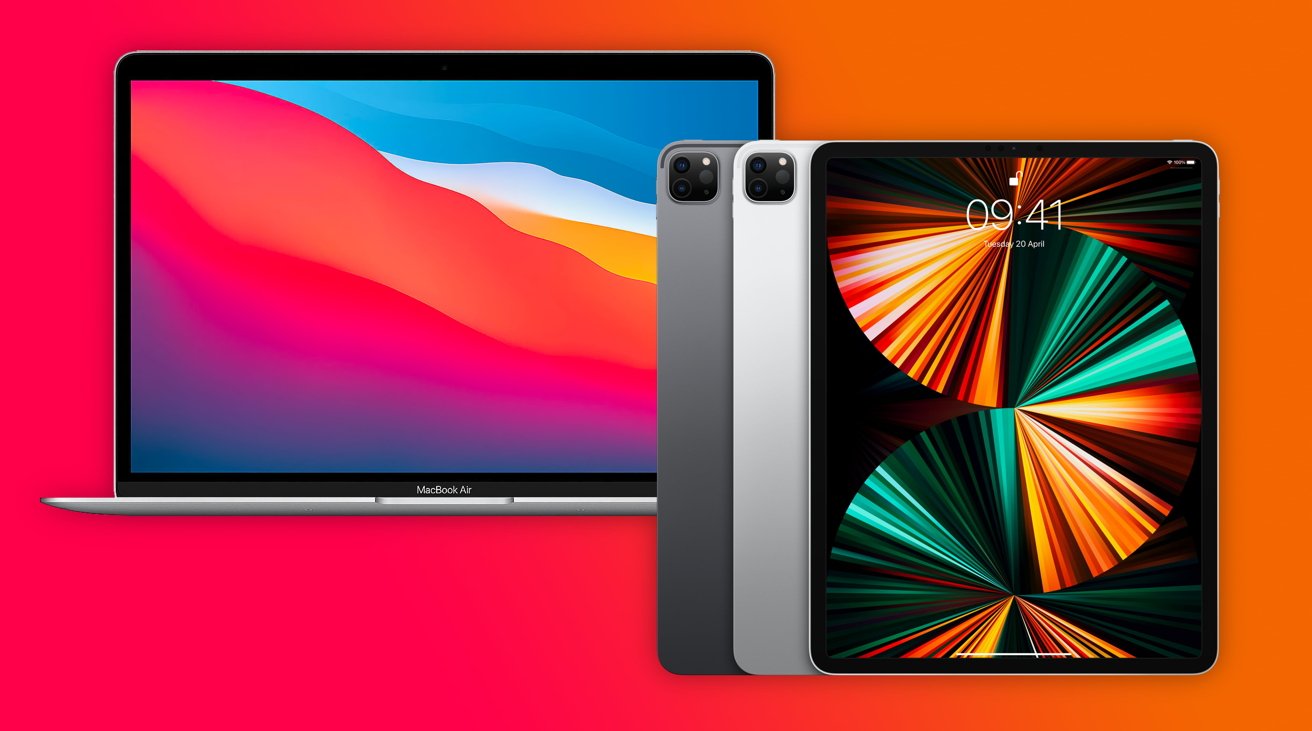

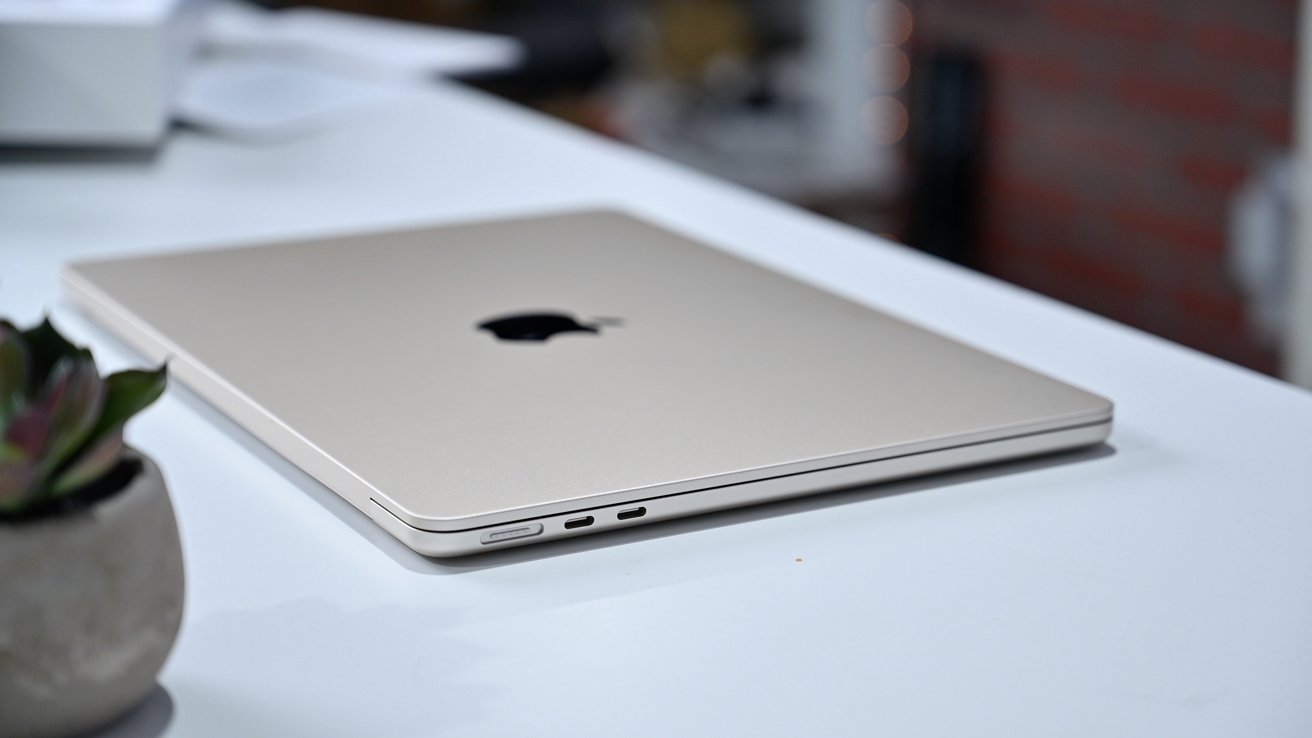
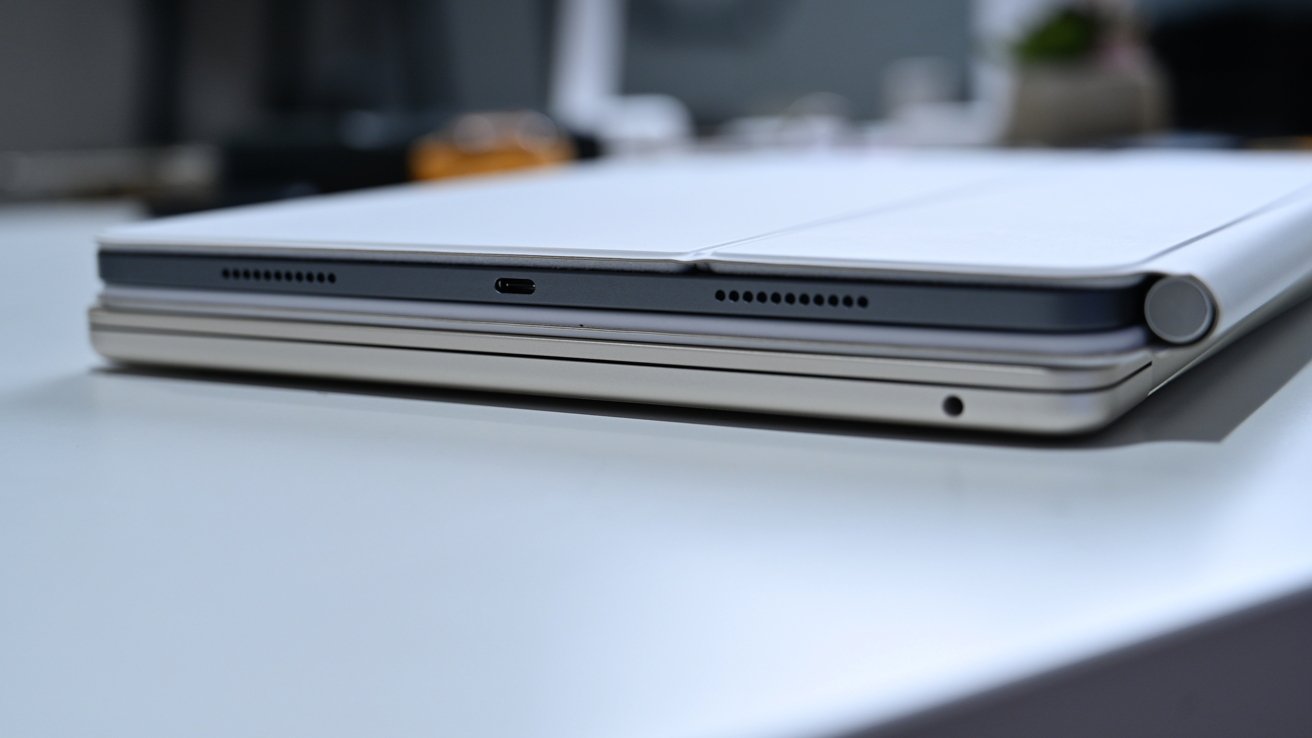
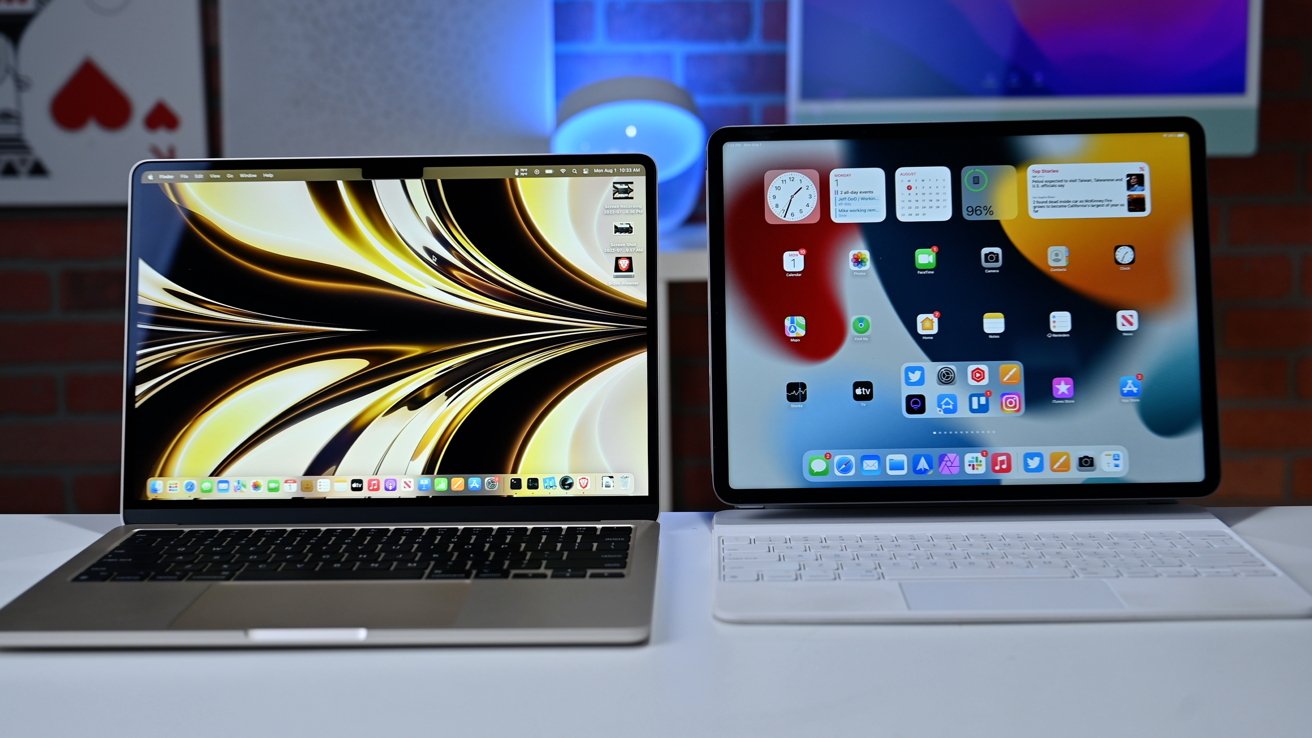

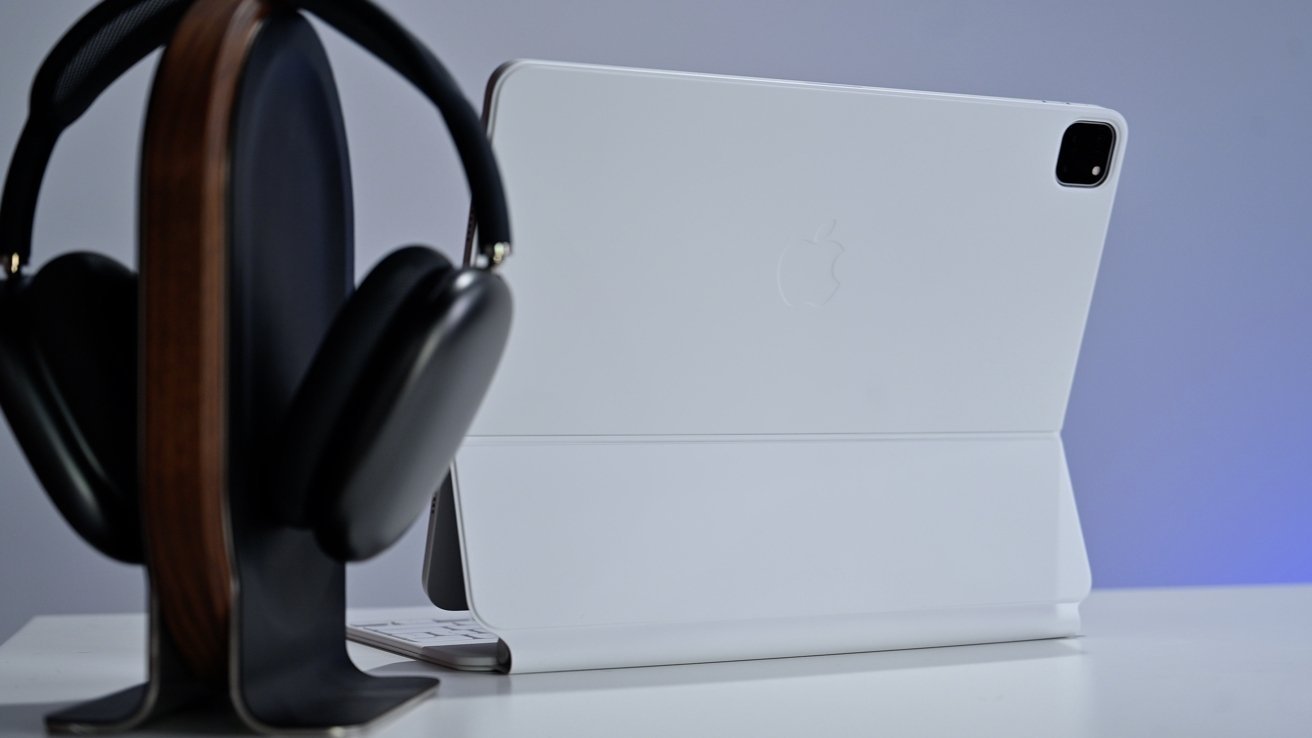
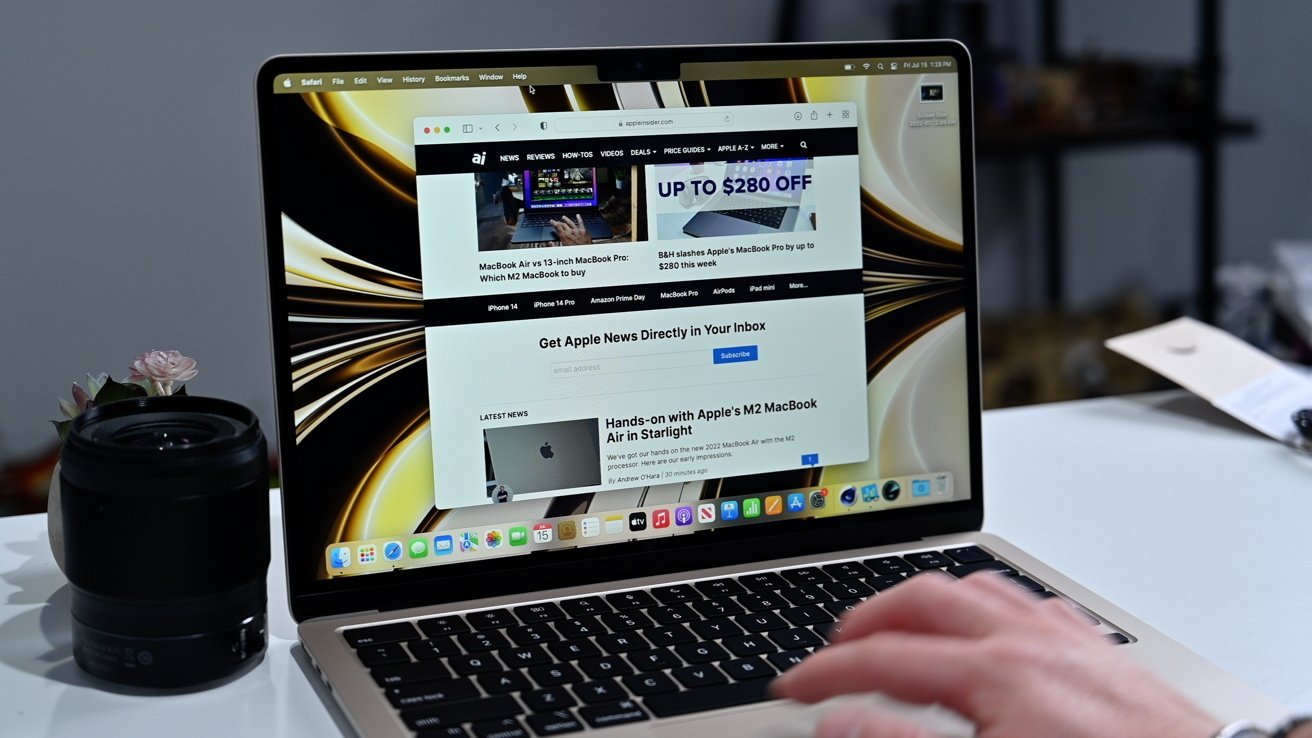
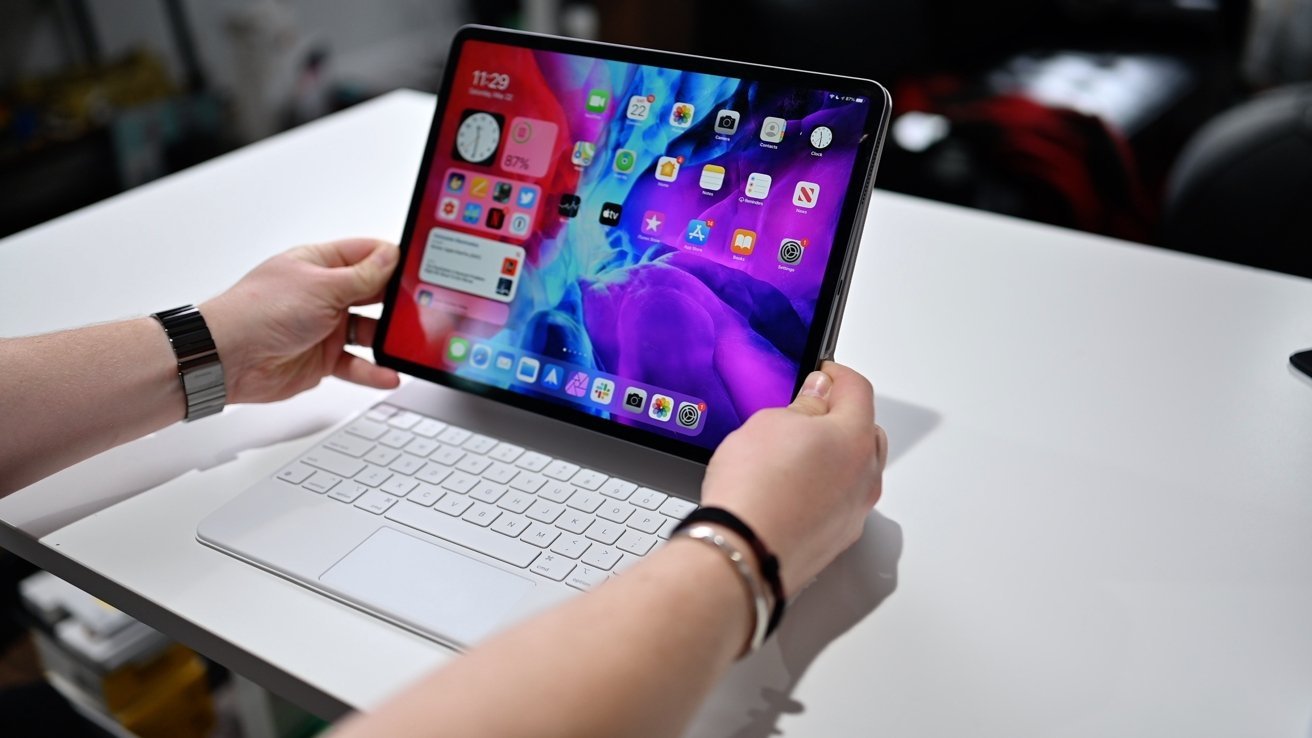
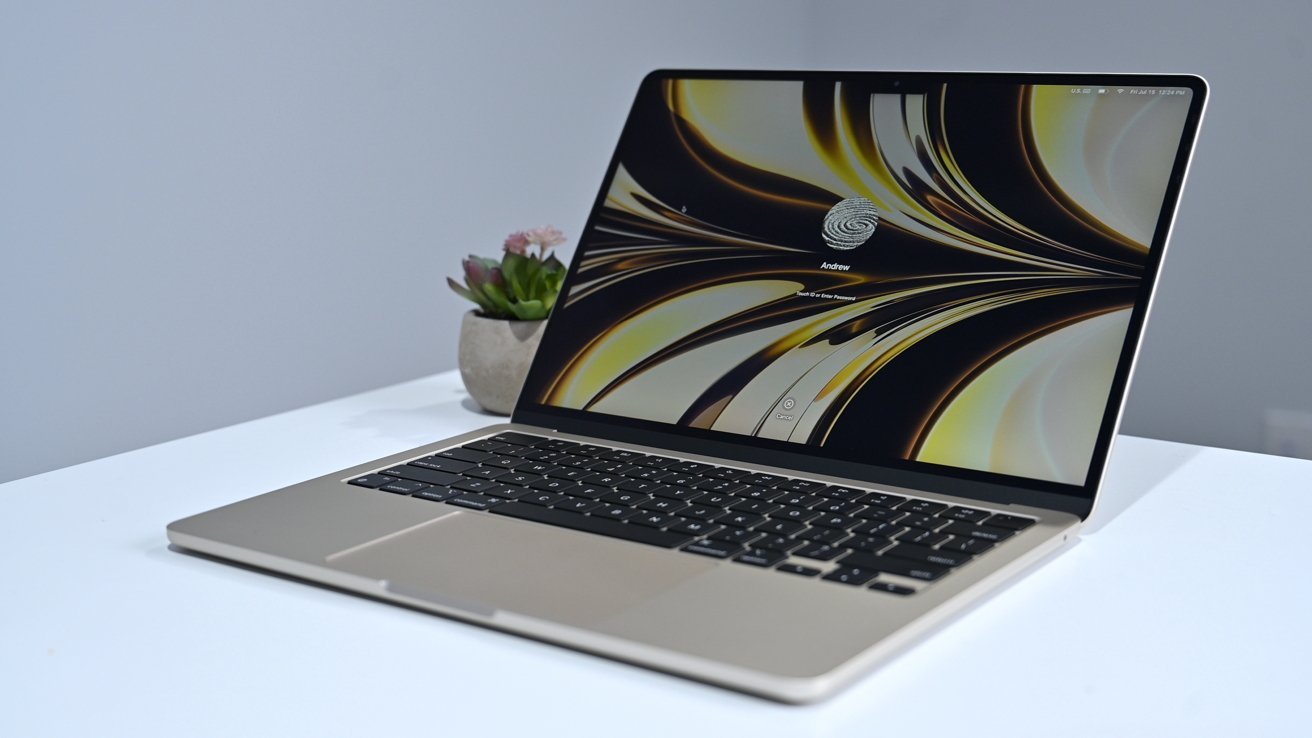







-m.jpg)






 Brian Patterson
Brian Patterson
 Charles Martin
Charles Martin



 William Gallagher
William Gallagher
 Christine McKee
Christine McKee
 Marko Zivkovic
Marko Zivkovic








4 Comments
So far I’m finding the M2 MacBook Air to be noticeably quieter for non-music audio and FaceTime calls. The M1 iPad Pro is so far superior in this respect.
M2 iPad Pro 12.9 for the holidays for me!